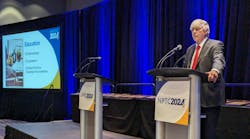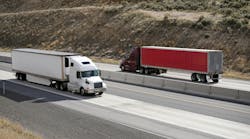Michael Dinning, division chief for the Department of Transportation’s Volpe research center in Cambridge, MA, believes that border crossing checkpoints for trucks don’t have to become “bottlenecks” as security is increased – in fact, the opposite could result.
“From what we’ve been seeing, the idea that border security has to be a bottleneck is just not true – we can actually increase security and freight flow at the same time,” he said at the Homeland Defense Training Conference sponsored by Homeland Defense Journal magazine last week in Arlington, VA.
“For example, we’ve found that the FAST [Free & Secure Trade] program [at the U.S.-Canadian border] has actually improved freight passage at certain crossing points because freight is being pre-certified well before it transits the border,” Dinning explained.
However, he noted that more work has to be done on the “human” side of the border crossing equation to keep improving the transit process.
“First of all, there’s the economics – few carriers and shippers want to pay for security measures. Second, even though the technology we’re using is much better than what we had a year and a half ago, we must have good training for the people using it in order to improving the trans-border freight flow,” Dinning said.
“Finally, to really ensure security, we have to go all the way back to the beginning of the supply chain to make sure no ‘bad stuff’ gets into the container or trailer in the first place,” he stressed. “Because all the security in the world does almost no good if bad stuff is already in the container or trailer to start with.”


